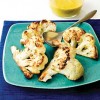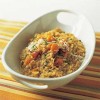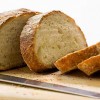Mama Stamberg's Cranberry Relish

In an NPR tradition, the Friday before Thanksgiving is the time for Susan Stamberg to share her mother-in-law's weird-sounding – but delicious – recipe for cranberry relish. This year, she's found a real fan: food writer and editor Ruth Reichl. The pair looked over some of the ingredients: sour cream, sugar and horseradish – preferably red horseradish.


